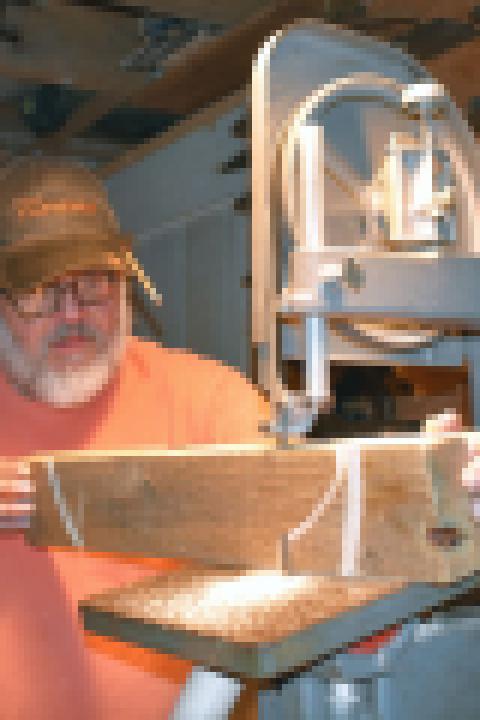Materials:
· 1 or 2 4/4 size violins; older ones are fine IF in good shape with no repairs needed. If you have a violin needing a seam glued, please use another violin that’s in good shape for bridge fitting. Suppliers offer new student violins at good prices.
· 3-4 Bridge blanks, 41.5mm and/or 42mm medium grade; Despiau, Aubert, Teller, etc. Many prefer Aubert Mirecourt and some prefer Despiau 1-tree, but it’s your decision.
· Strings: decide if you want new strings (whichever make/model you choose), and if so, have them ready
· Sound Post setter, gauge, retriever, etc. if the sound post falls and you want to reset it
· Peg bushings; available from suppliers (have at least 4 available)
· Glue pot, electric hot plate and small “sauce” pan w/ lid for heating hide glue flakes
Tools:
Violin knives; ¼”, ½”, ¾” sharpened and ready for use!
Block plane: many prefer old Stanley 9½, but other manufacturers offer very nice planes (see below)
Chisel; 1/8”, ¼”, ½” or wider too
Reamer (for peg holes in scroll); preferably a “straight” flute rather than spiral
Small, fine-tooth saw for cutting peg bushings (see below)
Sound Post setter
Sound Post retriever
Sound Post inspection mirror
Bend-a-light, or similar light to fit into the F-holes of the violin
Mousetail file – very small (coarse)
Mousetail file – very small (fine)
Flat medium coarse file; Grobet makes nice files; Cut 2, 1, 0, 00 but you’ll only need the Cut 1 for this class
Nut files (set of 4 or 5)
Sandpaper; grits beginning with 80 up to 600 grit
Small compass dividers (preferably with metal points on both ends – not a pencil on one end)
Towel and/or “cradle” for holding/supporting violin while on bench
Digital calipers
Flexible 30 cm ruler
Rigid 12” ruler; prefer one side with metric, one side standard (U.S.A.)
Grease pencil, black (for marking bridge feet)
Grease pencil, white for marking placement of bridge; post-its, blue painter’s tape will work too for this
Soft 9 B pencil (VERY SOFT LEAD)
Alcohol lamp (denatured alcohol)
1mm or 1/16” drill bit (only used for pegs)
Power hand drill (used for pegs)
Chinrest key
Bridge template (comes in a set for Violin, Viola & Cello from bostonfiddle.com)
Scraper set (Japanese set is available from Metropolitan Music that is very good)
Parchments to protect bridge from “E” string digging in (bostonfiddle.com)
Carpenter’s Wood glue – fresh
Hide glue (flakes, not liquid)
Pallet knife – for opening a seam
Water-color brush (not too narrow, not too wide – “Goldilocks” size); used to apply hot hide glue
Chop stick – you’ll see J
Bridge lifter – optional but great to have
Magnifying glasses (Opti-visor, etc.) used for close-up work
Peg compound (Hill or other is fine)
Pencil
Paper towels, soft cotton rags
Optional tools/materials:
Sharpening stones 0000 Steel Wool
Violin polish Spray Shellac (yellow can)
Suppliers (& others):
Metropolitan Music Woodcraft Tool Supply Stewart McDonald Lee Valley Tools
Connolly Music International Violin Violintools.com Lie Nielson Toolworks
Hardware stores Howard Core
Contact Metropolitan Music for a complete pre-packaged “toolbox” for purchase at a discount. When you call, they can help guide your questions. sales@metmusic.com, (866) 846-5461. Other suppliers may offer similar packages if you ask.
Violin Setup Foundations, Level II
This course is a continuation of hands-on skills found in the Level 1 course and addresses additional fundamentals of a 4/4 violin set-up. This workshop addresses basic bench skills required for the repair and maintenance of a full-sized violin.
Students will leave this course understanding how to properly fit a bridge, glue an open seam and discuss more detailed repairs in an open forum to find solutions for common minor repairs found with private and rental instruments. String selections, maximizing the use and sound of inexpensive instruments, alternative woods and materials now available to luthiers, finding suppliers suitable for your needs, and many more topics will be discussed.
Participants are encouraged to take the “Knife & Tools Sharpening" course to find a higher level of success with this course and their personal bench skills.
A list of the tools and materials required for this course can be found in the Tools & Materials tab below.



